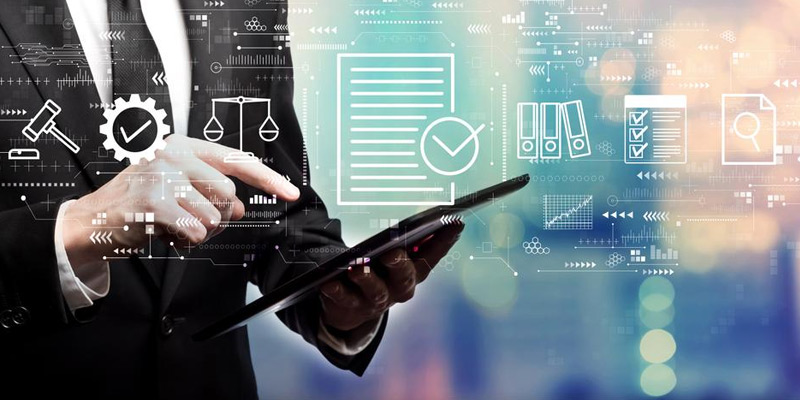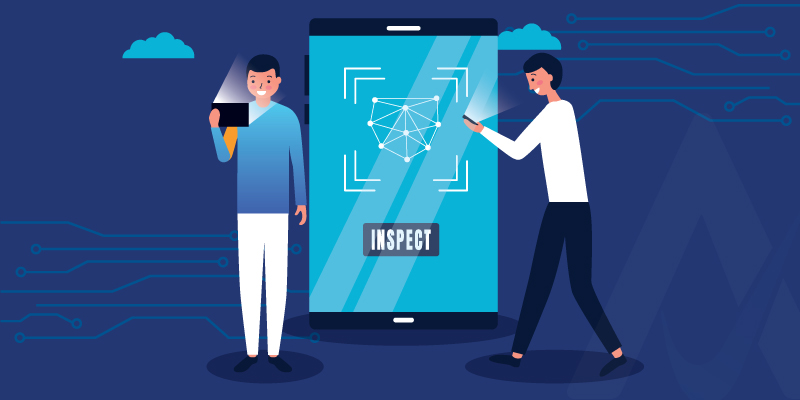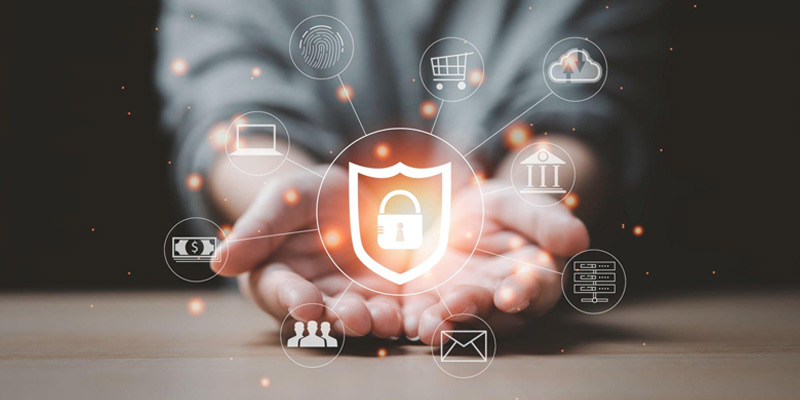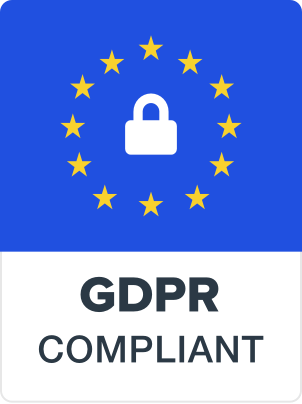Best Practices for Conducting Remote Audits with Audit Management Systems

July 27 , 2023
In the current digital era, remote auditing has grown in popularity, enabling organizations to carry out audits effectively and securely from any place. Remote auditing is now feasible and efficient thanks to sophisticated audit management system like UrAudits.
This blog will discuss the ideal methods for remote audits using audit management systems. We will offer helpful advice on protecting data integrity, conducting virtual inspections, remote collaboration, etc. We will also discuss the drawbacks of remote auditing throughout the blog and how the UrAudits inspection app can help. Let’s begin!
Understanding Remote Auditing and Its Benefits
Remote auditing entails conducting audits without being physically present, using audit management systems. Its benefits include less travel, cost savings, flexibility, and better productivity. A multinational corporation, for instance, can conduct audits across numerous sites without facing significant travel costs or logistical difficulties.
Choosing the Right Audit Management System

For remote audits to be successful, picking a dependable and feature-rich audit management system is essential. Look for a system with features like scalable audit templates, safe data storage, team communication tools, real-time reporting, and integration skills. To enable remote auditing across all its international branches, your Corporation can create an audit management system with a user-friendly interface and robust security features.
How to Establish Successful Remote Collaboration?
To conduct remote audits, collaboration among auditors, audit teams, and auditees must be smooth. For establishing productive remote cooperation, consider the following best practices:
-
Communication Technologies
Use video conferencing, instant messaging, and project management platforms to promote in-the-moment discussions, provide updates, and respond to questions. To ensure clear communication and openness throughout the auditing process, your company, for instance, can use video conferencing facilities to hold virtual meetings with auditees.
-
Document Sharing and Version Control
Implement a secure document-sharing system to share evidence, reports, and documents related to audits. Maintain version control to prevent misunderstandings or information loss. Your firm can use cloud-based document-sharing services to facilitate collaboration and keep correct records during distant audits.
-
Centralized Audit Management System
Implement a centralized platform for storing and managing audit-related data by implementing a centralized audit management system. Auditors, audit teams, and auditees can view and work together in real-time on audit documentation, conclusions, and follow-up activities. You can streamline collaboration and ensure transparency. An illustration of this is incorporating an audit management system, such as UrAudits, which offers a central location for all audit information, promoting effective data exchange and collaboration.
-
Clearly Defined duties and obligations
The duties and obligations of the auditors, audit teams, and auditees participating in the remote auditing process should be clarified. As a result, accountability is encouraged, reducing uncertainty, and everyone is sure to understand their roles and goals. Collaboration and decision-making can be streamlined, for example, by designating a specific audit lead and creating open lines of communication within the audit team.
-
Schedule Regular Check-Ins and Progress Updates
Schedule frequent check-ins and progress updates to keep all parties involved in the remote audit informed of its status. As a result, you can effectively track work, find bottlenecks, and quickly fix problems. The audit team can review progress, fix issues, and ensure alignment through, for instance, weekly virtual meetings or status updates through project management software.
-
Promote a Collaborative Culture
You can promote open dialogue, teamwork, and knowledge exchange between auditors, audit teams, and auditees. You can establish a welcoming environment where people feel comfortable asking questions, offering feedback, and sharing insights. You can promote this through online activities for team building, discussions on knowledge sharing, and acknowledging team members’ contributions.
Organizations can create productive remote cooperation by implementing these best practices, guaranteeing smooth communication, effective document sharing, and alignment among stakeholders participating in the remote auditing process.
Carrying out virtual inspections

You can perform auditor evaluations of physical sites and assets virtually. For conducting efficient virtual inspections, keep the following in mind:
-
Use of Live Streaming and Video Recording
You can use Live streaming or video recording tools to visually tour buildings, inspect the equipment, and take in processes. This method allows auditors to record live images and learn about the auditee’s operations. One such instance is Company XYZ, which uses drones fitted with cameras to conduct virtual inspections of manufacturing facilities and supply auditors with detailed visual data.
-
Secure Data Transfer
Ensure that auditees can securely transfer pertinent data, such as environmental monitoring reports, maintenance logs, or calibration certifications, to auditors. Use encryption protocols and secure file transfer techniques to protect sensitive information throughout the remote audit process. You can use encrypted communication channels and secure file transfer methods to protect data during remote audits.
With our all-in-one solution, increase your auditing efficiency! Discover the strength of our feature-rich site audit app and audit management system. You can streamline your inspecting procedures with customized audit templates and real-time incident capture. With the help of our user-friendly software, take charge of your audits and improve data integrity.
Upholding data security and integrity

Remote audits must prioritize data security and integrity. Think about the subsequent actions:
-
Access Control
Put severe access restrictions inside the audit management system to prevent unauthorized access to sensitive audit data. Use role-based permissions to set user access levels according to their duties. For instance, you can use role-based access controls and multi-factor authentication to protect audit data.
-
Data Encryption
Use encryption to guard against unauthorized access and data breaches by encrypting audit data in transit and at rest. You can guarantee that data from auditees remains private and that auditors can communicate information without risk. To protect data during remote audits and keep sensitive information safe from unauthorized outsiders, your company, for instance, can use vital encryption techniques like
- Transport Layer Security (TLS)
- Secure Socket Layer (SSL)
- Advanced Encryption Standard (AES)
- Public Key Infrastructure (PKI)
- Secure File Transfer Protocol (SFTP)
-
Disaster Recovery and Backup
To reduce the risk of data loss, develop a thorough disaster recovery plan and regularly backup audit data. Ensure backups are safely kept in several places to guard against potential system failures or security issues. You can perform daily backups of audit data and periodically does recovery drills to guarantee data availability and integrity.
Overcome Obstacles and Lessons Learned

There are particular difficulties with remote auditing. Taking proactive measures to overcome these difficulties and learn from them is crucial. Typical problems include:
-
Connectivity problems
Connectivity problems affect communication and data transfer during remote audits. You can perform a complete network assessment in advance to solve this difficulty. Organizations can benefit from the network assessment capability of the auditing and inspection software UrAudits. The software can assess network stability, bandwidth needs, and potential blockages to guarantee a dependable and secure connection for remote audits. When proactively addressing connectivity issues and ensuring smooth data transfer and communication during the auditing process, UrAudits offers invaluable insights.
-
Reliance on Technology
Since remote audits rely so much on technology, it’s critical to have backup measures. By offering a dependable and user-friendly platform, UrAudits greatly support organizations in overcoming this difficulty. It provides extensive support and training resources to ensure auditors and auditees are familiar with the app’s functionality and can overcome potential technological challenges. Also, UrAudits has built-in backup mechanisms, such as offline access to critical audit templates and documents, minimizing the impact of technology failures and ensuring uninterrupted audit processes.
-
Potential Misinterpretation of Visual Data
Visual data, such as photos or videos, is essential for remote audits but can be mistaken. By offering a simple interface for capturing and recording visual evidence, UrAudits solves this problem. The app’s capabilities, annotation tools (Drawing Tools, Text Boxes, highlighting and Underlining, Stamps, and Symbols, etc.), and contextual comments let auditors and auditees add details and resolve any issues with visual data.
As another benefit, UrAudits provides:
- Real-time collaboration.
- Permitting direct communication between auditors and auditees to debate and clarify visual evidence.
- Minimizing the chance of misinterpretation.
Businesses can successfully overcome these difficulties by using UrAudits. The app’s network assessment feature provides a steady connection; its user-friendly interface and support reduce reliance on technology alone, and its capabilities for gathering and clarifying visual data lower the risk of misinterpretation.
Overall, UrAudits improves the remote auditing experience by enabling organizations to conduct audits quickly and accurately while minimizing the effect of frequent issues that arise while conducting audits remotely.
Conclusion
Remote auditing is valuable for companies looking for efficient and secure auditing techniques. Companies can get beyond geographic restrictions and speed up the audit process using audit management systems, remote communication tools, and virtual inspections. Despite obstacles, businesses can thrive in remote auditing by applying best practices and learning from actual situations.
Remote audits can increase productivity, lower costs, and produce better results with careful planning, effective communication, and an emphasis on data quality. Utilize audit management systems and adhere to suggested auditing procedures to profit from remote auditing.
Take control of your audits with our cutting-edge audit management system and UrAudits site audit app. Streamline your processes using customizable audit templates and real-time incident capture. Maximize efficiency and accuracy with our comprehensive solution. Download now for iOS or Android.
Copyright © 2024 Uraudits.com. All Rights Reserved. Privacy Policy | Legal | Terms of Use
Privacy Overview
| Cookie | Duration | Description |
|---|---|---|
| cookielawinfo-checbox-analytics | 11 months | This cookie is set by GDPR Cookie Consent plugin. The cookie is used to store the user consent for the cookies in the category "Analytics". |
| cookielawinfo-checbox-functional | 11 months | The cookie is set by GDPR cookie consent to record the user consent for the cookies in the category "Functional". |
| cookielawinfo-checbox-others | 11 months | This cookie is set by GDPR Cookie Consent plugin. The cookie is used to store the user consent for the cookies in the category "Other. |
| cookielawinfo-checkbox-necessary | 11 months | This cookie is set by GDPR Cookie Consent plugin. The cookies is used to store the user consent for the cookies in the category "Necessary". |
| cookielawinfo-checkbox-performance | 11 months | This cookie is set by GDPR Cookie Consent plugin. The cookie is used to store the user consent for the cookies in the category "Performance". |
| viewed_cookie_policy | 11 months | The cookie is set by the GDPR Cookie Consent plugin and is used to store whether or not user has consented to the use of cookies. It does not store any personal data. |









